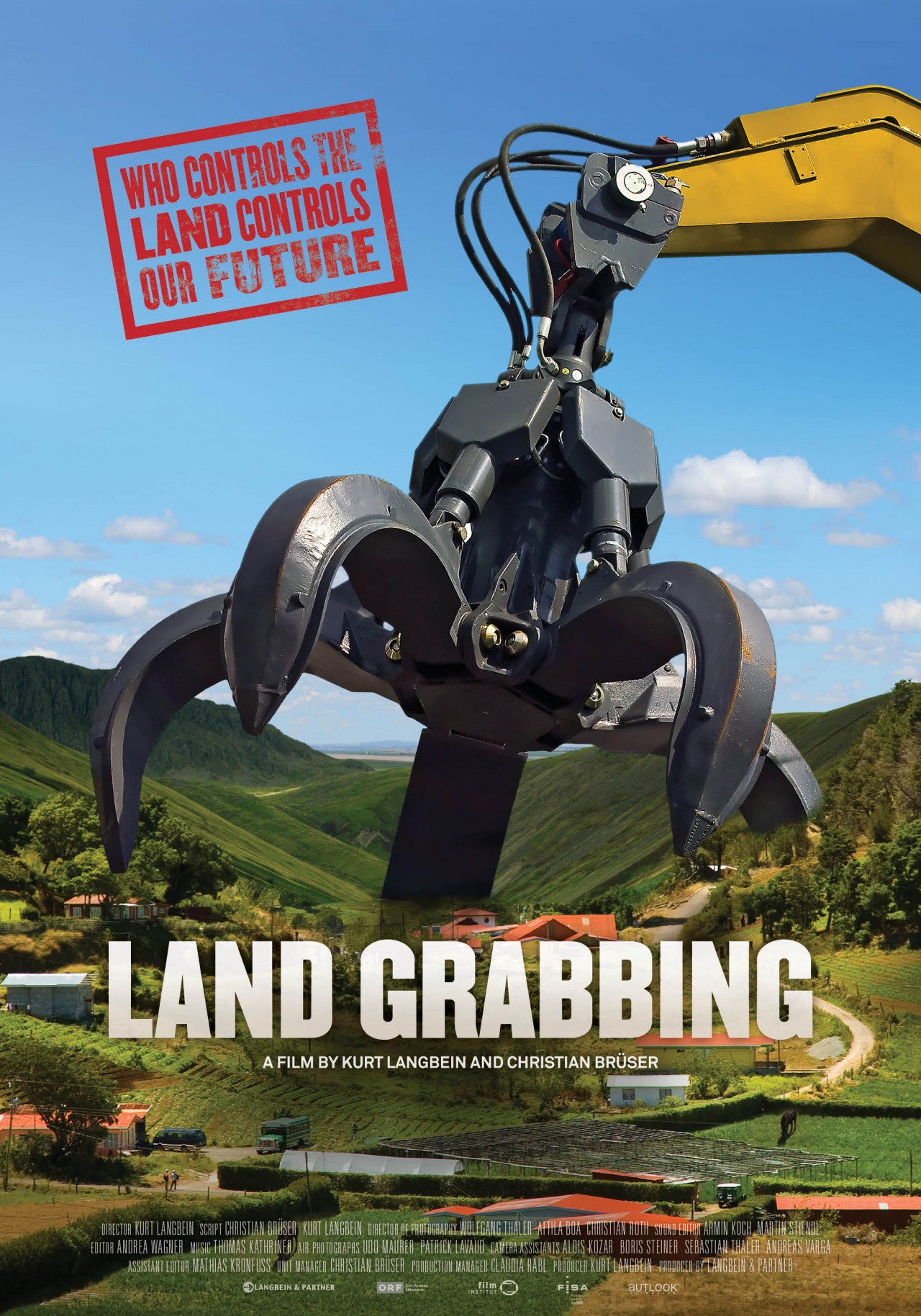LAND GRABBING: SYNOPSIS
Farmland is becoming more and more valuable and scarcer. Every year we lose about 12 billion hectares of farmland through soil sealing. After the financial meltdown in 2008 the global financial capital discovered the business segment of global farmland. Through land grabbing the rich of the world want to secure access to the world’s most important resources. Consequently, instead of farmers, profit is put before soil. If we don’t stop the raids, we will destroy our livelihood.
LAND GRABBING portrays both investors and their victims. Their self-image could not be more different. They speak of healthy economics, of safeguarding food supply and of prosperity for all. The others tell about eviction, enslavement and the loss of their economic base.
LAND GRABBING narrates the consequences in big pictures. Soils have been levelled on a grand scale for GPS-controlled machines, the consumption of water, chemicals and energy is enormous in the agricultural industry. For each energy unit used in industrial farming, only three energy units can be harvested, with smallholder agriculture it is seven times the amount – 23 energy units.
LAND GRABBING shows the dimensions. An area half the size of Europe has already been snapped up, farmers and indigenous peoples have had to yield. Instead of growing food for the region, the farmland is used for large-scale production for the markets of prosperous countries.
LAND GRABBING tells us what this has to do with us. It is the EU programs which lead to mega plantations for green fuel and sugar production. And it is with development aid money from Austria the superrich hedge their investments.
LAND GRABBING causes a stir, gives food for thought and inspires direct action. Resistance against “land-grabbing” is getting stronger and louder.
LAND GRABBING: DIRECTOR'S STATEMENT
Land Grabbing gets near to the people. Land Grabbing intervenes. But Land Grabbing doesn’t judge, it follows the protagonists’ trains’ of thought and seeks out the images, which show the consequences of their actions.
There are the investors. Those who make big money, narrate how they discovered land seizure as an opportunity for financial investment. One can understand their way of thinking, which is apparently not cynical. Their estates are gigantic, amazingly orderly, and perfectly organized.
Then, there are the smallholders, refugees and farmworkers. They talk about eviction, hunger, competition and the destruction of their homeland. Their living environment is sparse and wretched.
The film follows both worlds and only on rare occasions mounts a polemic, but chooses mainly to let the chains of association develop. Are the worlds we see in the film really that irreconcilable?
The great issues of this film – the reason for shortage, the logic of finance and the roadmap between smallholder and industrial agriculture – are told in film essays. Each of them starts with what seems to be a chance removal from an actual happening – e.g. with a helicam flight upwards – and lets emotions and associations and mind gradually ramble through the topic, using a montage of „great“ aerial photographs and close-ups from the ground set to music.
Land Grabbing aims to raise concerns. It is the conditions originating from our countries which lure the big money into the fields –and we can shape these conditions.
Download synopsis and director's statement here:




